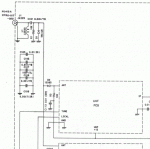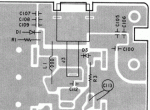Somehow, there suddenly seems to be an internal short on the circuit board antenna connection. Basically, if I put an ohmmeter between the chassis ground and the center conductor of the antenna jack, I'm getting conductivity between them. I've desoldered and removed the antenna jack but am still showing the same problem, so it's definitely an issue on the board itself. Checked all the soldering to make sure nothing is touching, and it's all good.
Could this be a resistor or something that went bad and is stuck open, causing this? Anyone ever run across something like this before?
Could this be a resistor or something that went bad and is stuck open, causing this? Anyone ever run across something like this before?



